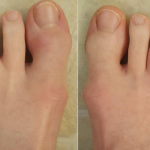 ACR CONVERGENCE 2021—The increasing number of targeted and biologic therapies to treat patients with psoriatic arthritis (PsA) has expanded the armamentarium for rheumatology. However, data on medication use in the real-world clinical setting and patient medication preference are limited. Using a cross-sectional survey of patients meeting Classification Criteria for Psoriatic Arthritis (CASPAR) from a single, academic center, researchers ranked patient treatment preferences. Monica Schwartzman, MD, a double-board certified rheumatologist and internal medicine specialist, who is an assistant attending physician at the Hospital for Special Surgery, New York, and a clinical instructor in medicine at Weill Cornell Medical College and New York-Presbyterian Hospital, presented the findings during ACR Convergence 2021.1
ACR CONVERGENCE 2021—The increasing number of targeted and biologic therapies to treat patients with psoriatic arthritis (PsA) has expanded the armamentarium for rheumatology. However, data on medication use in the real-world clinical setting and patient medication preference are limited. Using a cross-sectional survey of patients meeting Classification Criteria for Psoriatic Arthritis (CASPAR) from a single, academic center, researchers ranked patient treatment preferences. Monica Schwartzman, MD, a double-board certified rheumatologist and internal medicine specialist, who is an assistant attending physician at the Hospital for Special Surgery, New York, and a clinical instructor in medicine at Weill Cornell Medical College and New York-Presbyterian Hospital, presented the findings during ACR Convergence 2021.1
The 2018 ACR/National Psoriasis Foundation Guideline for the Treatment of PsA supports using biologic treatments as initial therapy for patients with PsA. Many agents are approved to treat PsA, including:
- Interleukin (IL) 17 inhibitors, such as brodalumab (Siliq), secukinumab (Cosentyx) and ixekizumab (Taltz);
- The oral, small-molecule, anti-phosphodiesterase (PDE) 4 agent apremilast (Otezla);
- Anti-IL-12/23 agents, such as guselkumab (Tremfya), risankizumab (Skyrizi) and ustekinumab (Stelara);
- Non-steroidal anti-inflammatory drugs (NSAIDs);
- Glucocorticoids and local glucocorticoid injections for symptomatic treatment;
- Conventional synthetic disease-modifying anti-rheumatic agents (csDMARDs), such as methotrexate, sulfasalazine, cyclosporine and leflunomide;
- Anti-tumor necrosis factor alpha (anti-TNF-α) inhibitors, such as adalimumab (Humira), certolizumab pegol (Cimzia), etanercept (Enbrel), golimumab (Simponi/Aria) and infliximab (Remicade/Inflectra/Renflexis);
- The cytotoxic T lymphocyte-associated antigen-4 immunoglobulin fusion protein (CTLA4-Ig) abatacept (Orencia); and
- The Janus kinase (JAK) inhibitor tofacitinib (Xeljanz).2,3
For this study, patients with PsA were recruited between June to September 2020. A five-point Likert scale was used to rank patient preferences from not at all important to extremely important.
The Results
One hundred and thirty-seven patients with PsA (29%), with a median age of 60 years old (interquartile range [IQR] 51–70 years), responded to the survey. Their median duration of PsA skin symptoms was 19 years (IQR 10–34), their median duration of joint symptoms was 12 years (IQR 8–21), and their median duration of PsA diagnosis by a physician, from symptom onset, was eight years (IQR 4–17).
For 62% of the respondents, an NSAID was the first medication used to treat their PsA. The most commonly used, initial, immunomodulatory medications were anti-TNF-α inhibitors (35%), followed by methotrexate (19%), then by anti-PDE-4 agents (12.4%), other csDMARDs (11.7%), anti-IL17 agents (5.1%) and anti-IL 23 agents (2.9%). At the time the survey was administered in 2020, the most common immunomodulator therapies were TNF-α inhibitors (30%), followed by IL-17 inhibitors (20.4%), methotrexate (10.2%), PDE4 inhibitors (8.8%), other csDMARDs (8.0%), JAK inhibitors (2.2%) and abatacept (1.5%). Twenty-eight percent of patients were not receiving immunomodulatory therapy.



